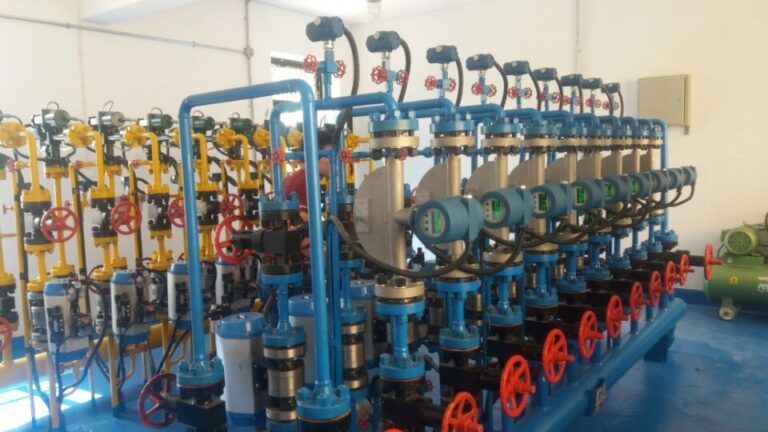Introduction
In industrial automation and process control, the 4-20mA current loop has become the standard method for transmitting analog signals. It is widely used for measuring and controlling physical parameters such as temperature, pressure, level, and flow. But why has this particular range (4-20mA) been universally adopted over other forms of signal transmission, such as voltage signals (e.g., 0-10V) or digital signals? This article explores the advantages of using the 4-20mA current signal in industrial applications.
1. Strong Resistance to Interference
One of the key advantages of using a 4-20mA current signal is its robustness against electrical noise and interference. In industrial environments, where large motors, inverters, and other high-power electrical devices operate, electromagnetic interference (EMI) is common.
Unlike voltage signals, which can experience significant voltage drops due to cable resistance and capacitance, current signals remain constant regardless of wire impedance.
Even in a noisy environment, a current loop remains stable and accurate, ensuring reliable data transmission.
Example: In a factory with high-voltage equipment, a 0-10V voltage signal could fluctuate due to induced electromagnetic noise, while a 4-20mA signal would remain unaffected, ensuring accurate readings.

2. Long Transmission Distance
The 4-20mA signal is highly effective for long-distance transmission. Since current signals are not significantly affected by resistance, they can travel over long distances without substantial signal degradation.
Typical transmission distances can reach several hundred meters without requiring signal amplification.
Example: In large industrial plants such as petrochemical refineries, where sensors may be located hundreds of meters away from the control room, a 4-20mA signal ensures accurate and consistent data transmission.
3. Standardization and Interoperability
The 4-20mA signal is an internationally accepted standard in industrial automation, making it easy to integrate devices from different manufacturers.
Sensors, transmitters, and control systems from different vendors can easily communicate using the same signal standard.
Example: A production line might use temperature sensors from one manufacturer, pressure transmitters from another, and flow meters from a third. Since all use the 4-20mA standard, they can seamlessly interface with the same control system.
4. Safety and Fault Detection
The 4-20mA current loop offers inherent safety benefits and fault detection capabilities.
Live-Zero Concept: The use of 4mA (instead of 0mA) as the lower range ensures that the system can detect sensor or wiring failures. If the current drops below 4mA, it typically indicates a broken wire or sensor failure.
High Reliability in Hazardous Areas: The low power consumption of a 4-20mA loop minimizes the risk of electrical sparks, making it suitable for explosive or flammable environments such as chemical plants and coal mines.
Example: In a hazardous gas detection system, if the signal drops to 0mA, the control system can immediately alert operators of a sensor malfunction, prompting quick maintenance actions.

5. Easy Signal Conversion and Integration
In modern industrial control systems, signals often need to be converted for compatibility with digital control systems such as PLCs (Programmable Logic Controllers) or SCADA systems.
A 4-20mA signal can be easily converted to a digital signal using an A/D converter for further processing.
Similarly, voltage signals can be converted to 4-20mA using a V/I conversion module, facilitating integration into long-distance transmission systems.
Example: A pressure transmitter sending a 4-20mA signal can be connected to a PLC, where the signal is converted into digital data for monitoring and control.
6. Two-Wire Transmission Reduces Complexity
The 4-20mA system supports a two-wire transmission method, where the same two wires carry both power and signal, reducing installation complexity and costs.
Cost Efficiency: Fewer wires mean reduced cabling costs and easier maintenance.
Simplified Installation: Two-wire systems require less space and are easier to manage in complex industrial setups.
Example: A smart transmitter using two-wire 4-20mA transmission can be powered by the loop itself, eliminating the need for separate power wiring.

7. Suitable Dynamic Range for Measurement and Control
The 4-20mA range provides an optimal dynamic range for accurate measurement and control.
The 4mA lower limit prevents sensor dead zones, ensuring that even small variations in the measured parameter are accurately detected.
The 20mA upper limit provides a clear, high-resolution signal for control systems.
Example: A pressure sensor measuring 0-100 kPa can map this range proportionally to 4-20mA, ensuring precise monitoring of pressure changes.
8. Historical Background: Why 4-20mA?
The 4-20mA signal standard was established as industrial automation evolved in the mid-20th century. The choice of 4mA as the minimum value, rather than 0mA, was to ensure that system failures (such as broken wires) could be easily detected. The 20mA upper limit was chosen because it provided sufficient signal strength while remaining safe in hazardous environments.

Conclusion
The 4-20mA current loop remains the dominant method for industrial signal transmission due to its robustness against interference, ability to transmit over long distances, ease of standardization, and built-in fault detection. Its compatibility with digital control systems and ability to simplify wiring further enhance its value in industrial applications. As industries continue to evolve with advancements in IoT and smart automation, the 4-20mA standard remains a reliable and indispensable component of modern process control systems.
